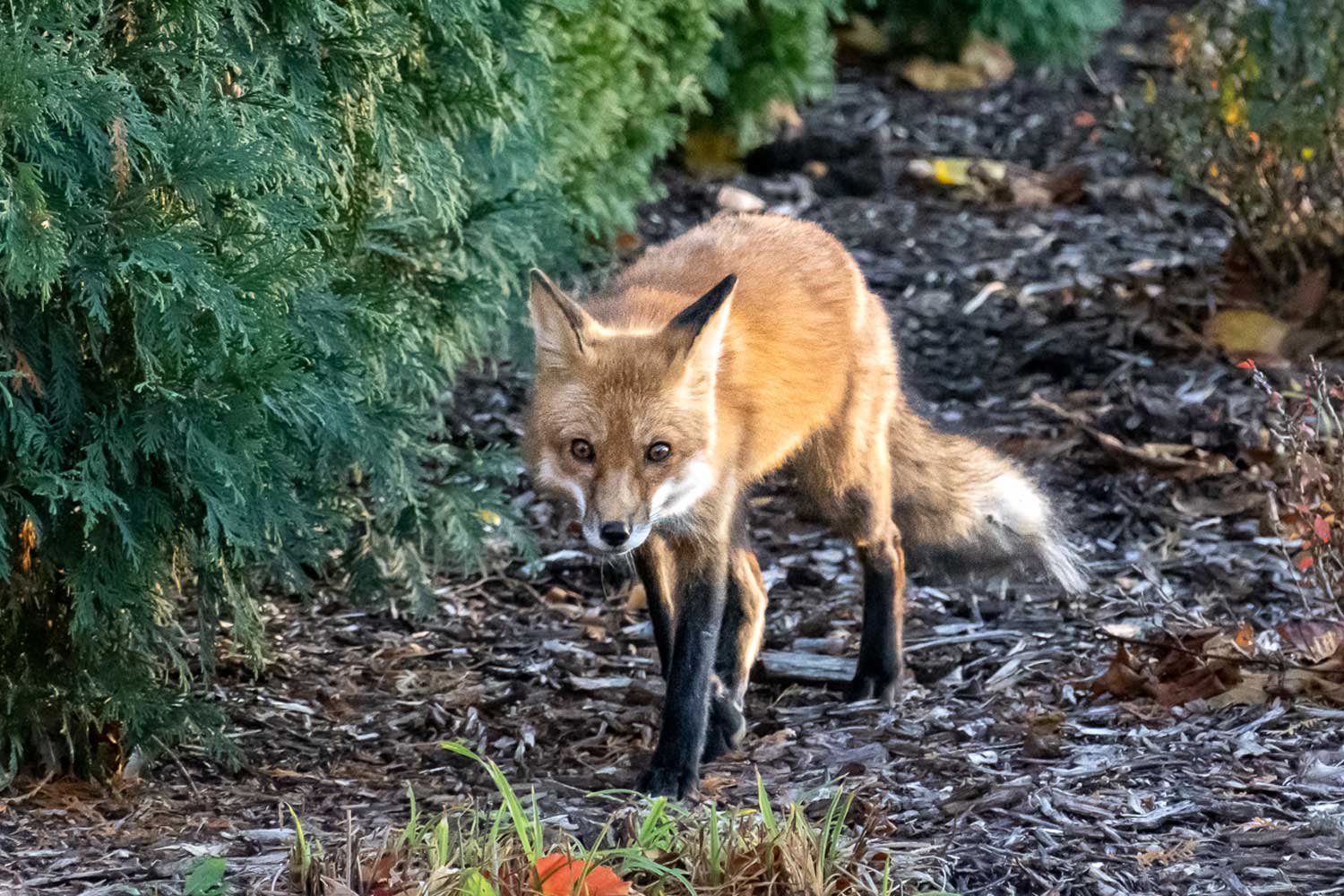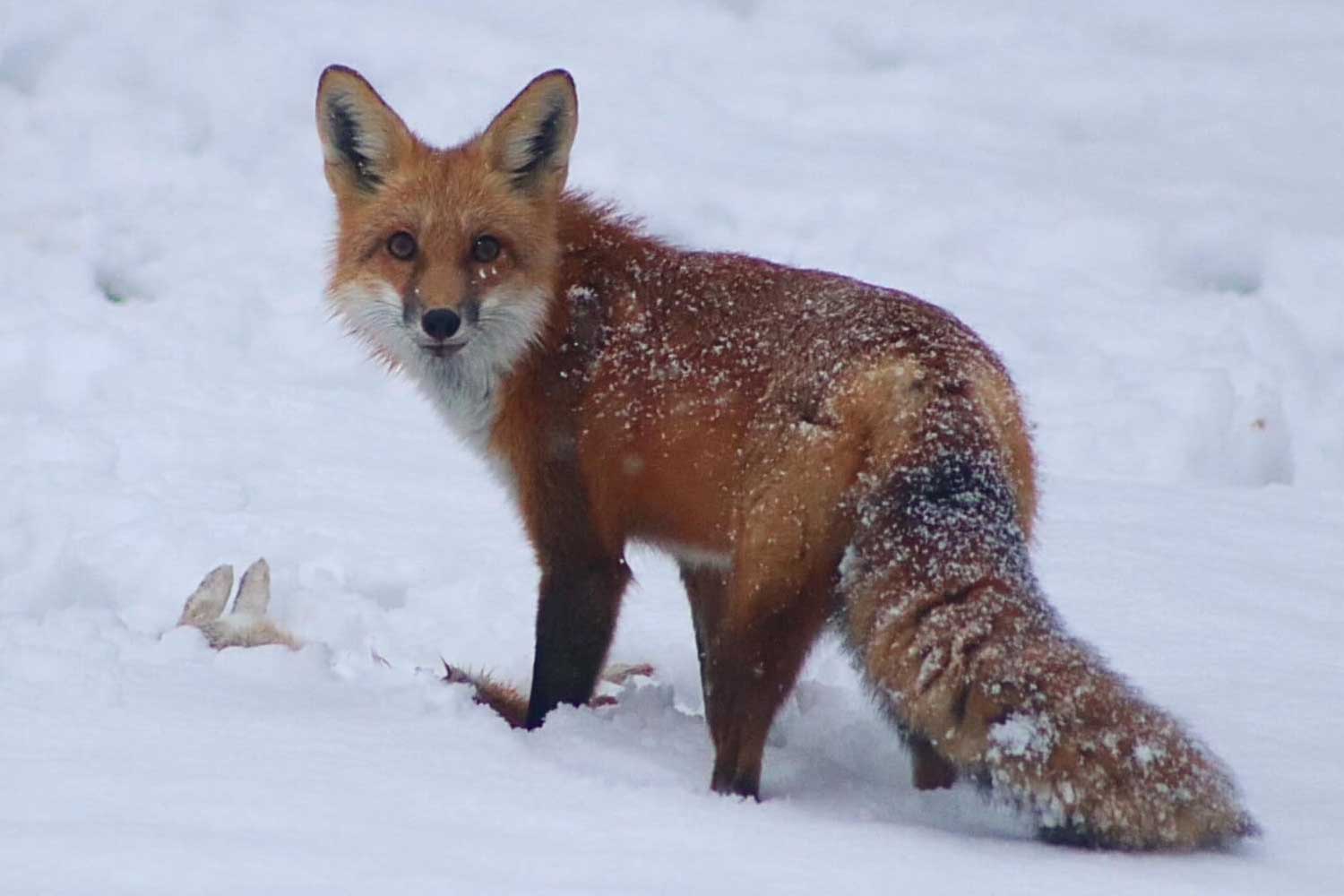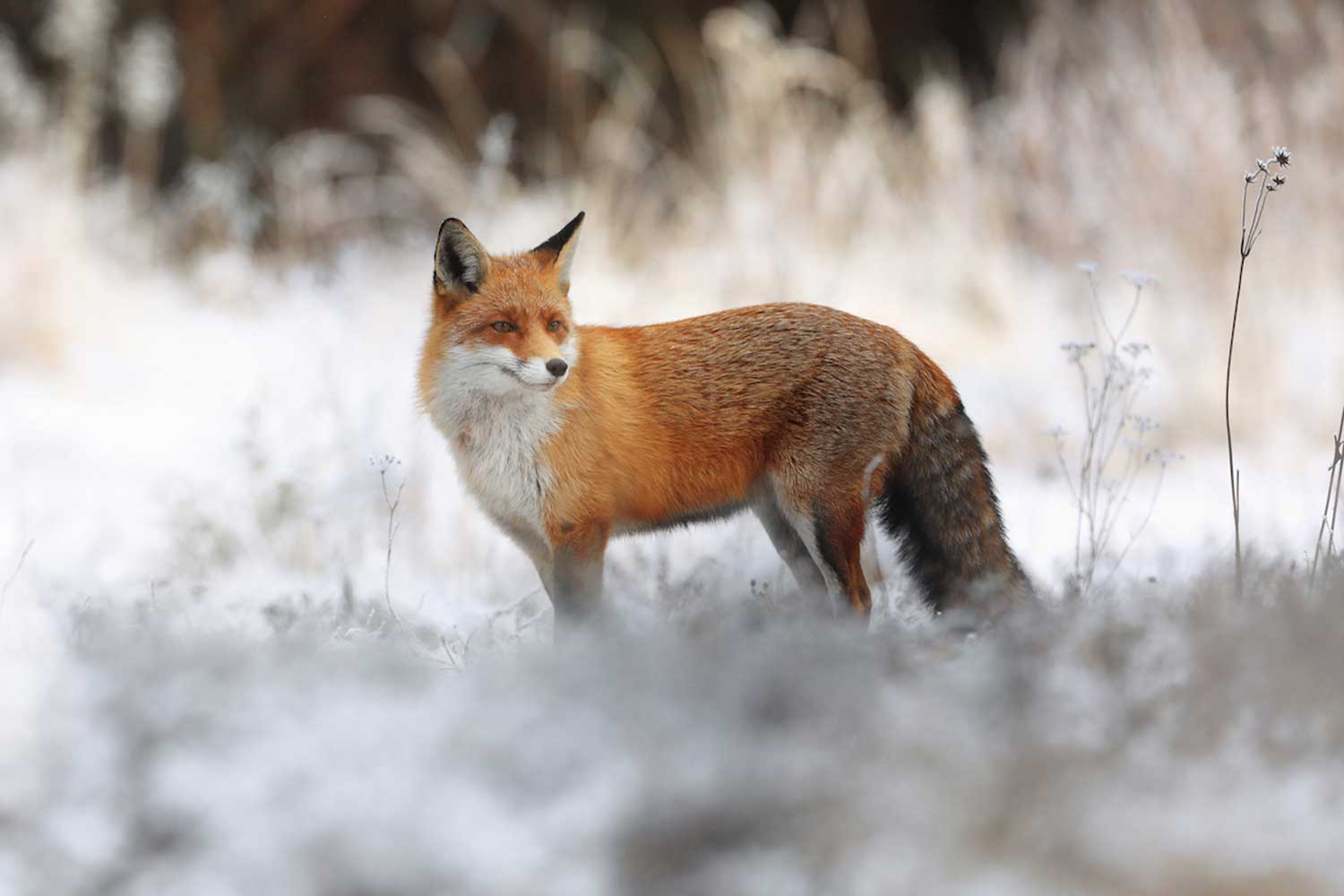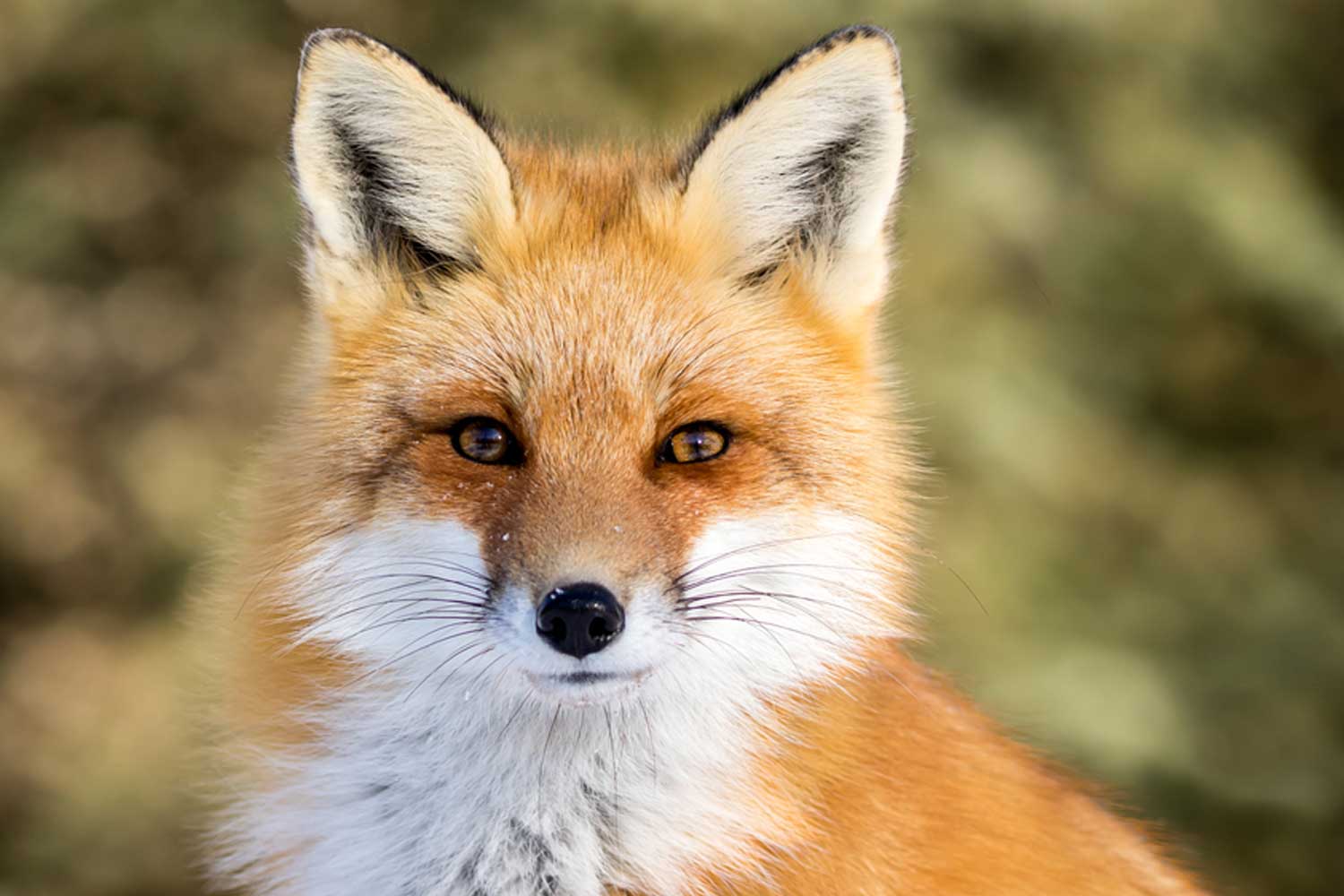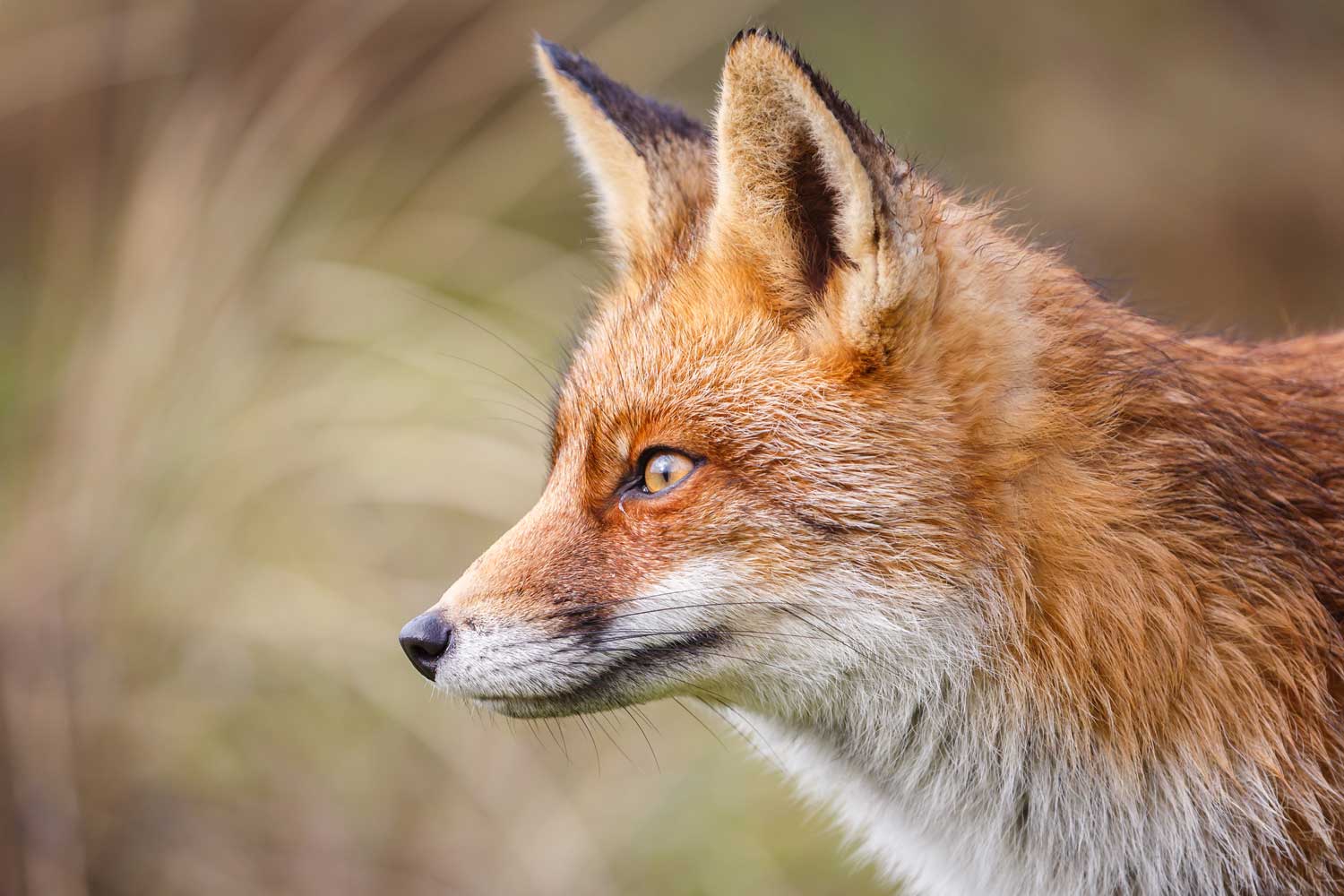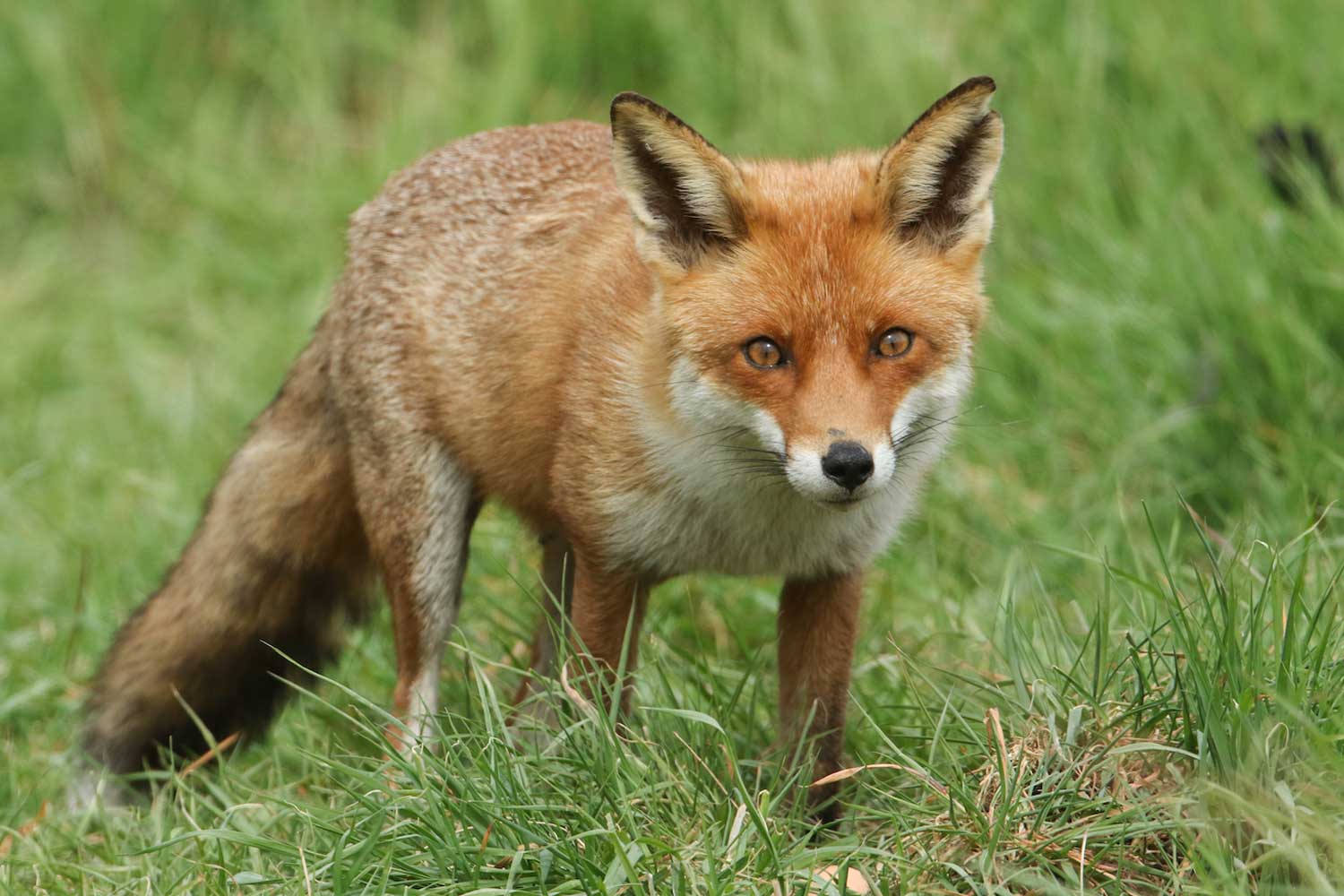Five fast facts about resourceful red foxes
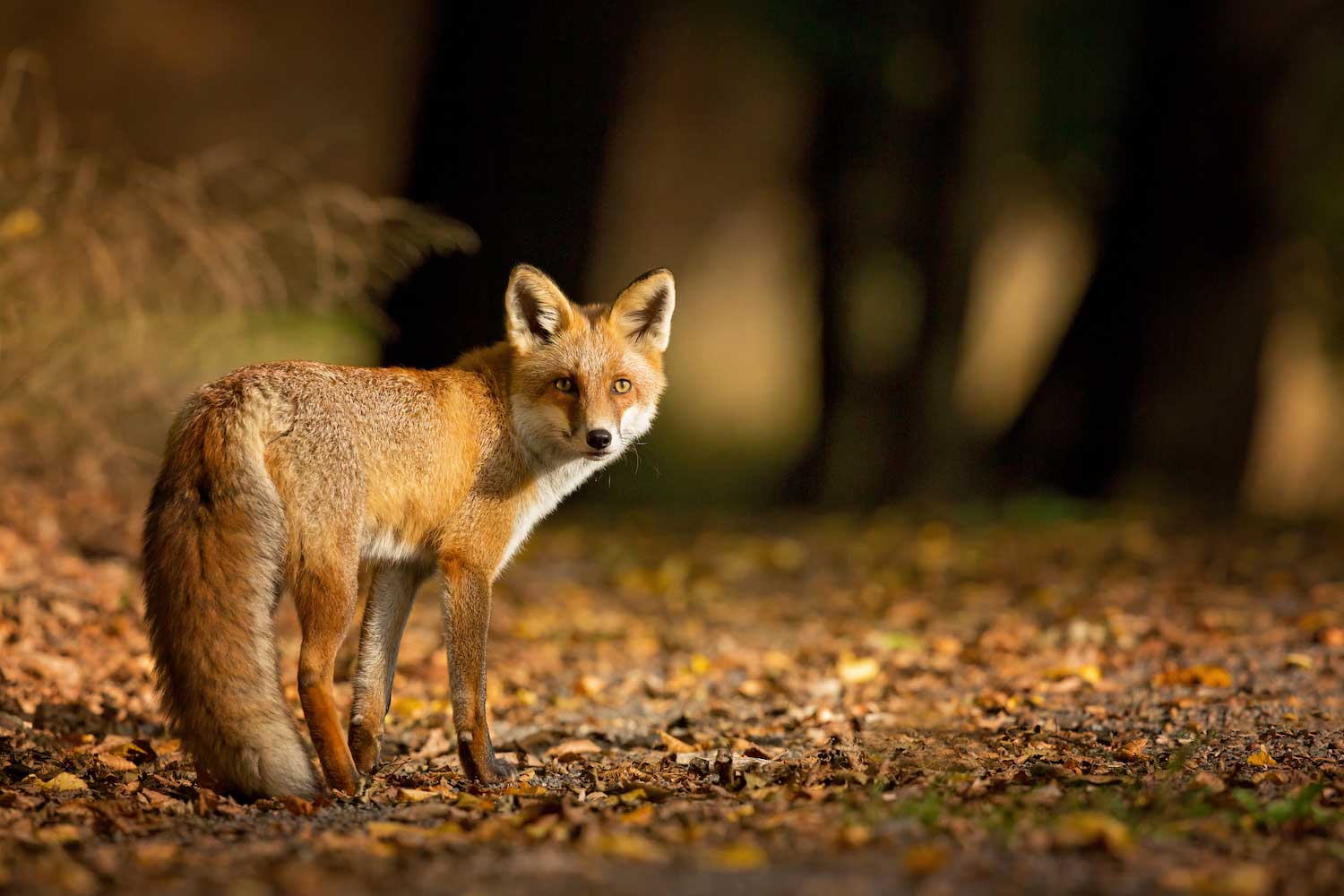
Thanks to their distinctive appearance, red foxes aren't easy to confuse with other animals across Will County. Although they are quite common, they do a good job of remaining unseen, being most active at night or in the early morning hours.
In Illinois, red foxes can live in a variety of habitat areas. They typically sleep hidden away above ground, but they sometimes dig burrows or move into a burrow abandoned by another animal, according to Wildlife Illinois. They also create dens for raising their young, called kits.
Mating season for red foxes usually occurs in January or February, with a litter of anywhere between one and 11 kits born in March or April, according to Animal Diversity Web. The kits are born blind and helpless, cared for by both parents for as long as 12 weeks before they are able to venture out for short trips to explore the world. By fall, they are ready to leave the family unit and live on their own.
They aren't always a rusty red color
The rusty red color for which red foxes are named is the most common color for these animals, but it's not the only one. Several other color variations are possible, and sometimes foxes from the same litter can even be different colors, according to the National Park Service. In addition to rusty red, these foxes can also be silver, black or a cross between red and silver, which is a color morph known as cross fox.
No matter what color a red fox is, they all have a white-tipped tail, which is a key identification feature for red foxes, the Park Service reports. This is also what helps distinguish between red foxes and gray foxes, which are similar in appearance and have ranges that overlap. While red foxes have white-tipped tails, gray foxes have black-tipped tails.
And even among red foxes that do sport the namesake red fur, they aren't all red. They have gray or black legs and white and gray patches on their chests and necks, according to the National Wildlife Federation.
They are the largest fox in the world, but far from the only one
The red fox is the largest of all the fox species in the world, standing about 16 inches tall and between 17 inches and 35 inches long and weighing up to 30 pounds, according to Animal Diversity Web. Although they are the most common and widespread, there are not alone among foxes. Most foxes belong to the Vulpes genus, which includes 12 species, although half are known only through fossil records. The gray fox, which can sometimes be confused with the red fox, does not belong to the Vulpes genus. It belongs to the Urocyon genus, with Urocyon meaning "tailed dog," according to Animal Diversity Web. Animals in both the Vulpes and Urocyon genuses belong to the Canidae family, which also includes coyotes, jackals and wolves.
In addition to red foxes, other foxes from the Vulpes genus in North America are Arctic foxes, kit foxes and swift foxes. Arctic foxes inhabit the tundra of northern Canada as well as part of Eurasia, Greenland and Iceland, Animal Diversity Web reports. Kit foxes are predominantly found in the southwestern United States and northern and central Mexico, while swift foxes live in the western United States and Canada, most notably Colorado, Kansas, New Mexico and Wyoming.
While the red fox is the largest fox in the world, the tiny fennec fox is the smallest. It's between 9 inches and 16 inches long and weighs just 2 pounds to 3 pounds, according to National Geographic. The most noticeable feature about these diminutive foxes is their ears, which are about 6 inches long. Their seemingly oversized ears are useful in the hot North African climate where they live. They can use their ears to radiate heat and cool their bodies.
They have exceptionally good hearing
Red foxes must hunt to survive, and they rely on their keen sense of hearing to help them with this. They are able to hear the squeak of a mouse from 100 feet away, according to The Nature Conservancy. They can even hear mice and other rodents digging underground or under a cover of snow and will dig down to find them. In addition to their exceptional hearing, a good sense of smell and an ability to quickly see moving objects helps them as they hunt for prey.
They eat a lot of rodents and small mammals, but they are considered opportunistic eaters, making a meal out of whatever is available. They will eat eggs, fruits, and seeds in addition to small animals, Animal Diversity Web reports. When hunting live prey, they stalk slowly through their habitat. Once they catch sight of something, they creep up on it and pounce, launching themselves vertically into the air and then down on their catch. Pouncing like this helps ensure their prey is killed with little resistance and also helps the foxes save energy and avoid getting hurt.
They live in many places
Among meat-eating animals, red foxes are the most widespread on Earth, according to National Geographic. They live across most of the Northern Hemisphere, from as far north as the Arctic circle to as far south as northern Africa. Outside of their natural range, they have also been introduced in places such as Australia and the Falkland Islands, which are off the southeast coast of Argentina.
Within their range, red foxes are able to survive in a diversity of habitats, from tundra and desert to almost everything in between, according to Animal Diversity Web. They prefer habitat areas with mixed vegetation, such as forest edges and mixed shrublands and woodlands.
Red foxes live across Illinois, but they are more populous in the northern part of the state than the southern part, Wildlife Illinois reports. In areas where coyotes thrive in Illinois, red foxes have moved into more urban areas to avoid being preyed on by coyotes or competing with them for food.
They are athletic and agile
Red foxes are well regarded for their cleverness and resourcefulness, which serve them well in the wild, but they also rely on their athleticism and agility to hunt and survive in the wild. They can run at speeds of up to 30 mph and can jump as high as 6 feet to get over fences and other obstacles, The Nature Conservancy reports.
Their long, bushy tails also aid in their agility. Much like with domesticated cats, a fox's tail helps it balance as it moves through its environment, according to National Geographic. They also use their tails to help keep them warm and signal danger.
As adults, red foxes have very few predators in Illinois. They are hunted by coyotes, and elsewhere they can be hunted by wolves and bears, according to Animal Diversity Web. Young foxes are more vulnerable to predators and may be hunted by eagles and other birds of prey. This is why the kits typically stay in their dens under the watchful eye of their parents for several weeks after they are born.


